Abstract
The influence of hapten, carrier and their ratio in a complex on T-cell helper stimulation and antibody formation against the dinitrophenyl (DNP) hapten was studied. Complexes of DNP with bovine serum albumin (BSA), bovine gamma-globulin (BGG), isologous mouse immunoglobulin (MIG) and polyvinylpyrrolidone (PVP) as carriers were used. Optimal antibody formation against DNP was obtained with complexes with an intermediate hapten:carrier ratio (DNP 16-minusBSA, DNP 43-minusBGG and DNP 48-MINUSMIG). DNP-PVP complexes were not active either in the primary or in the secondary response. The anti-BSA titre was independent of the number of DNP groups on the complex used for immunization. Inhibition of DNP-plaque formation by spleen cells of immunized mice shows an increase of the inhibitory capacity of the complex with the increase of the hapten-carrier ratio. DNP 16-minusPVP was the only PVP complex which was inhibitory. These results suggest that helper cells involved in the antibody formation against BSA and DNP are reactive with different parts of the complex. Priming of mice with carrier or complex after cyclophosphamide (Cy) treatment followed by a secondary injection with complex 10 days later gave strong indications that there is a greater involvement in stimulation of helper T cells by determinants of the complex (new antigenic determinants (NAD) or NAP-DNP groups) or DNP, than by true BSA determinants. This holds for both the IgM and IgG responses.
Full text
PDF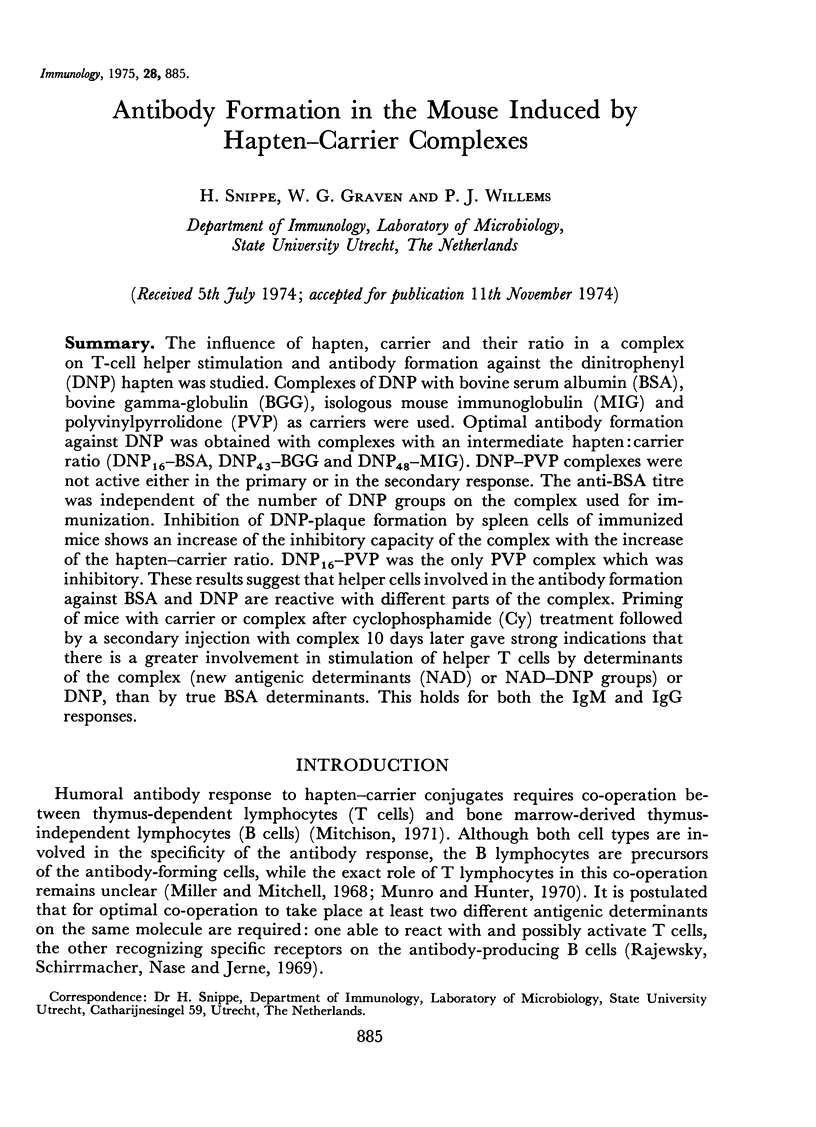
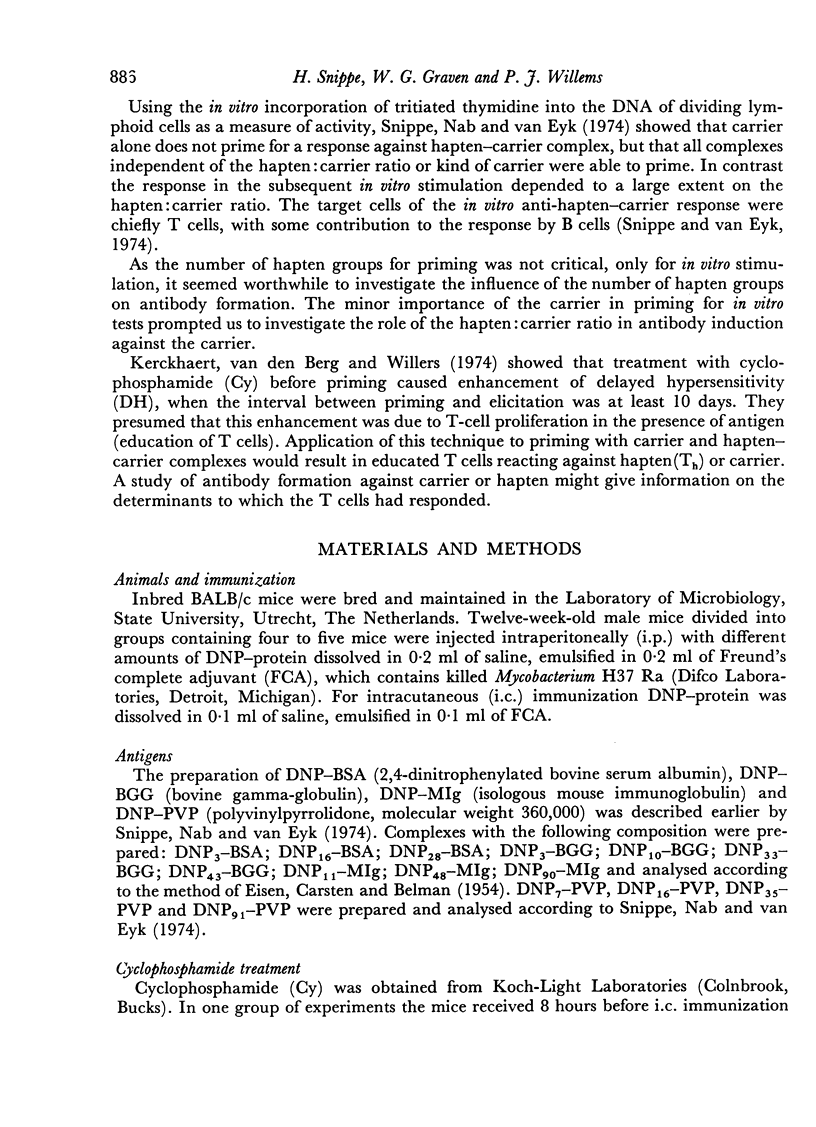
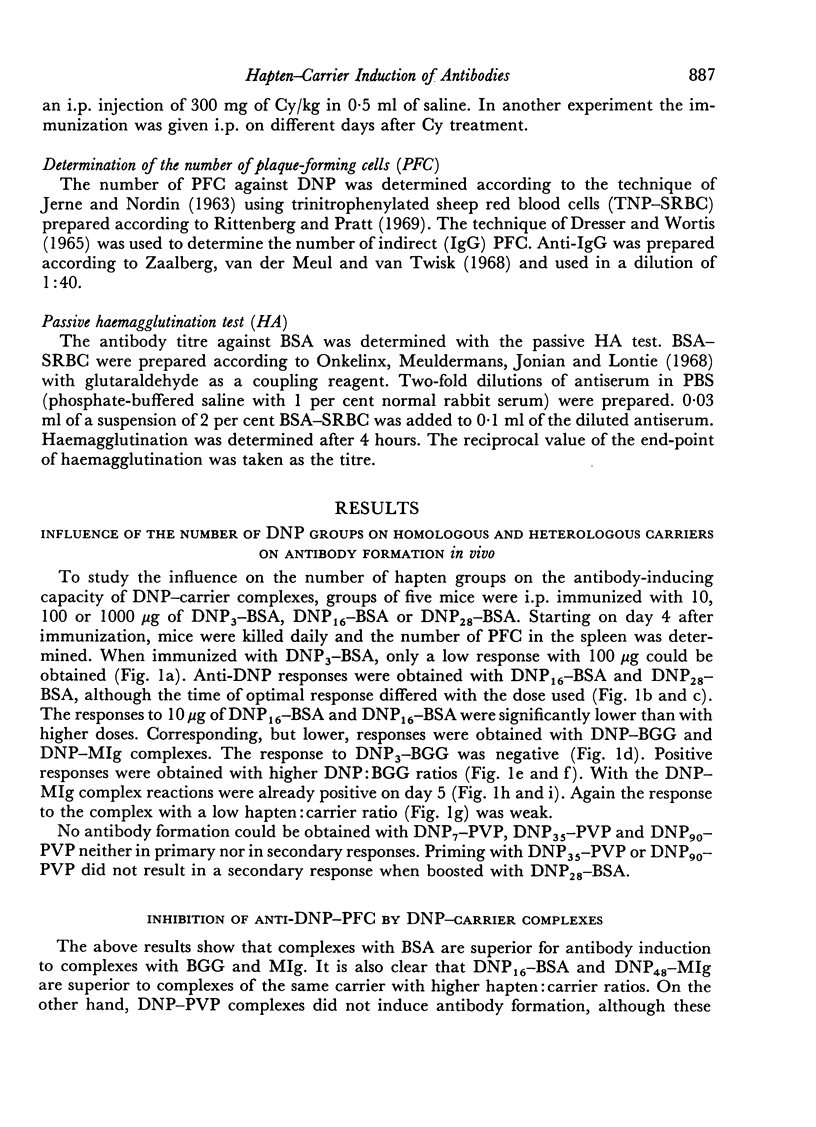

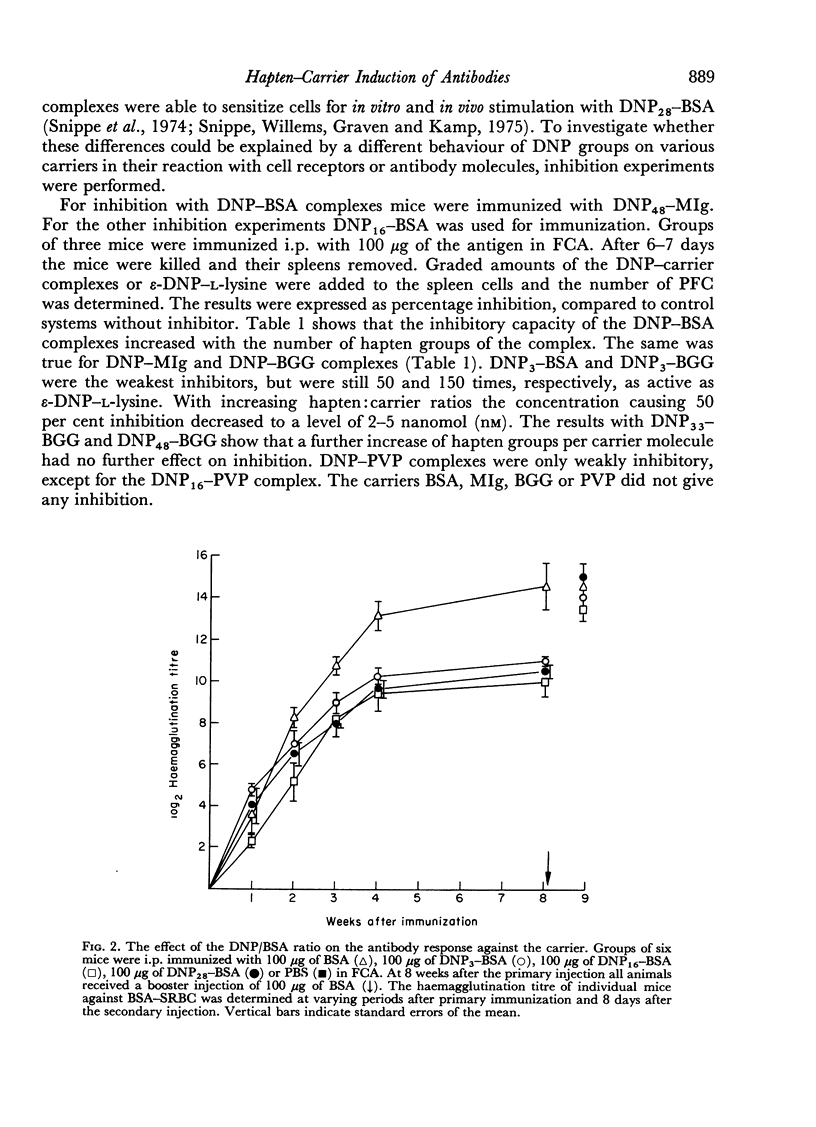
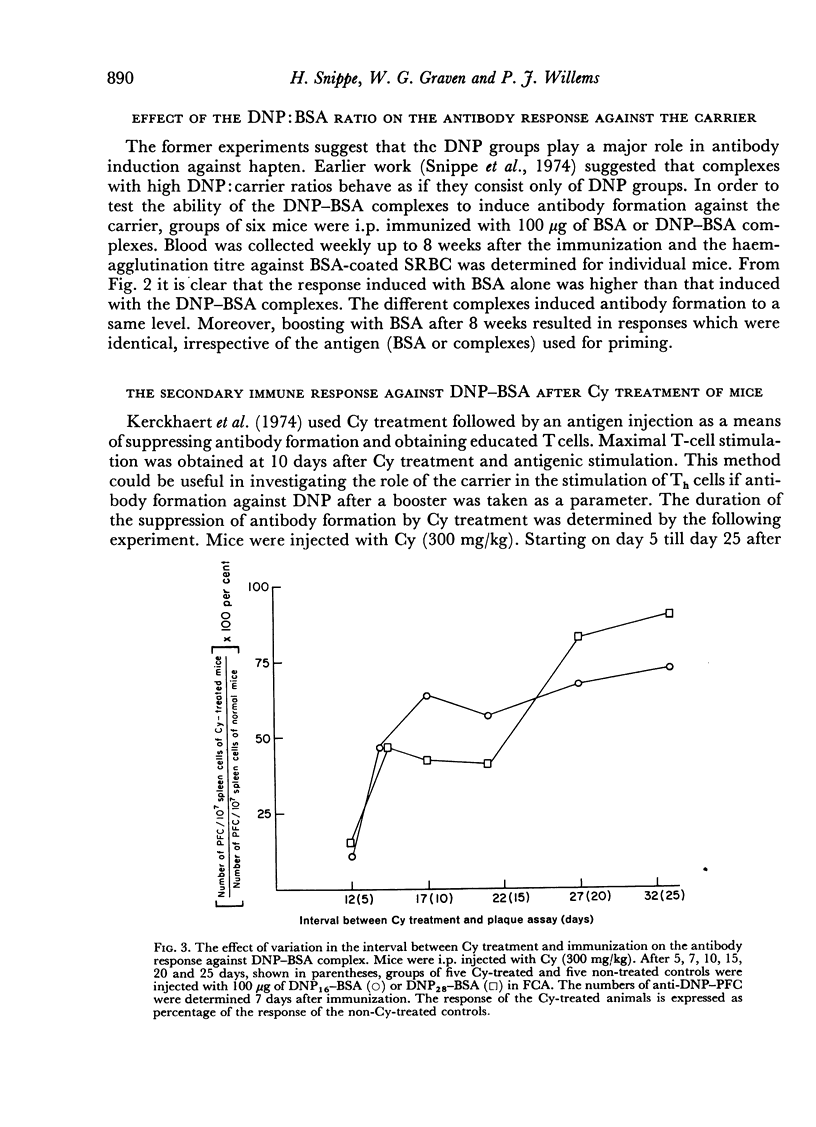
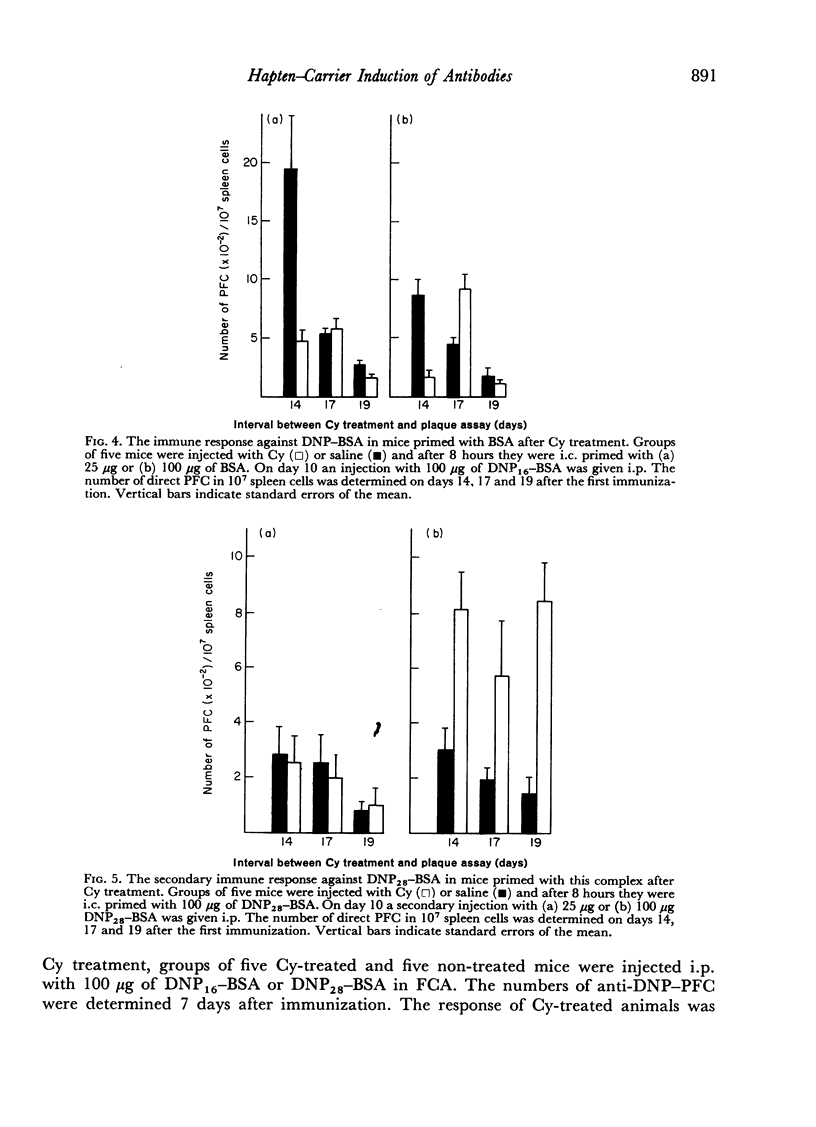
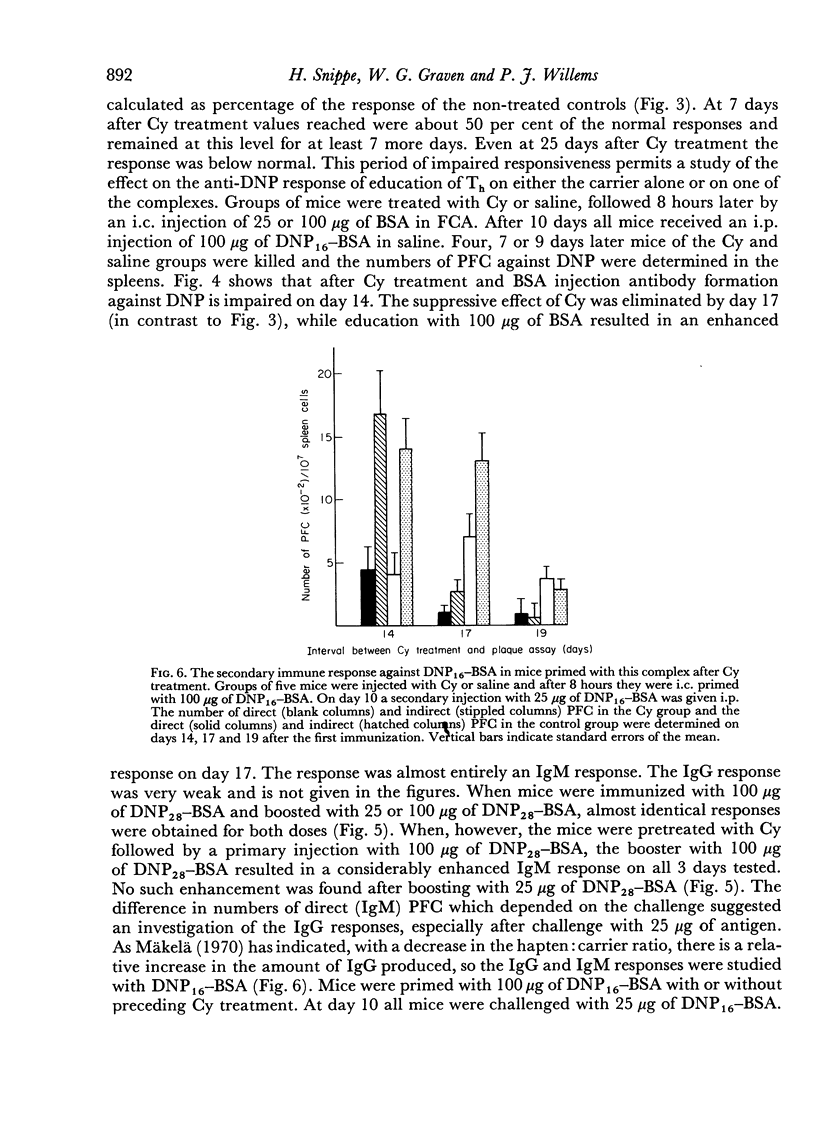
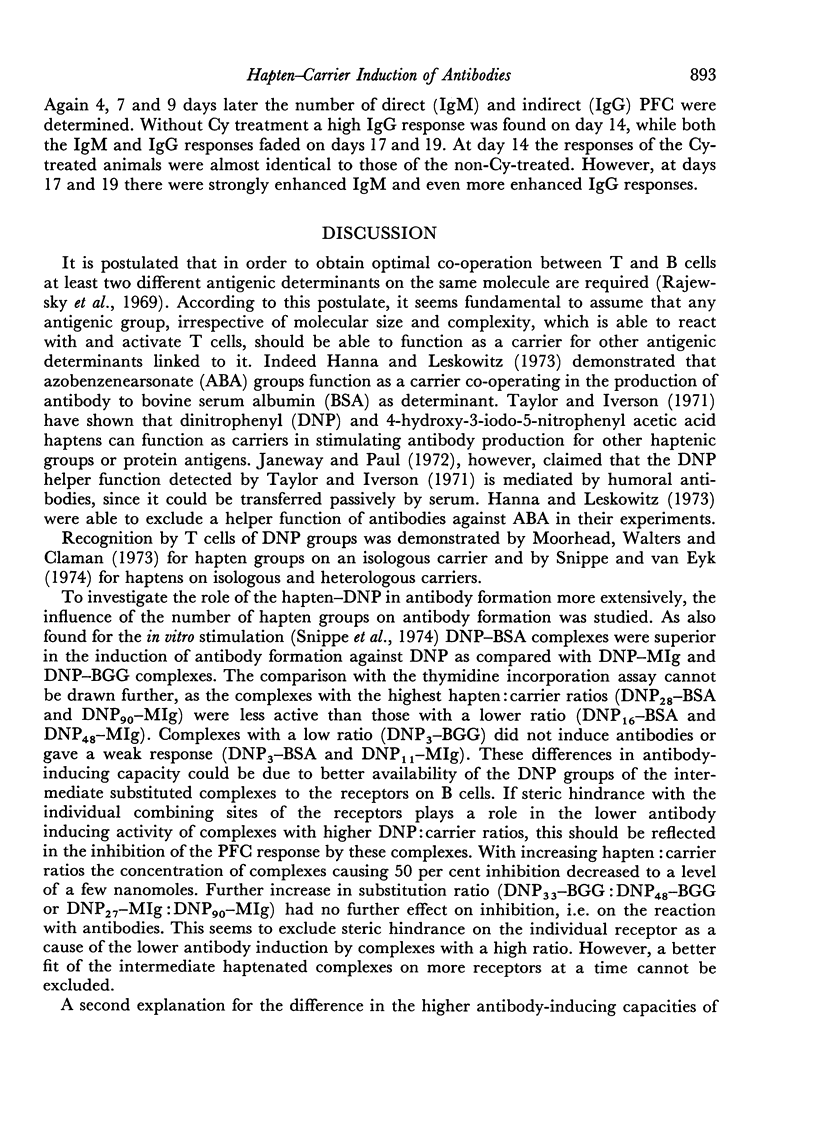

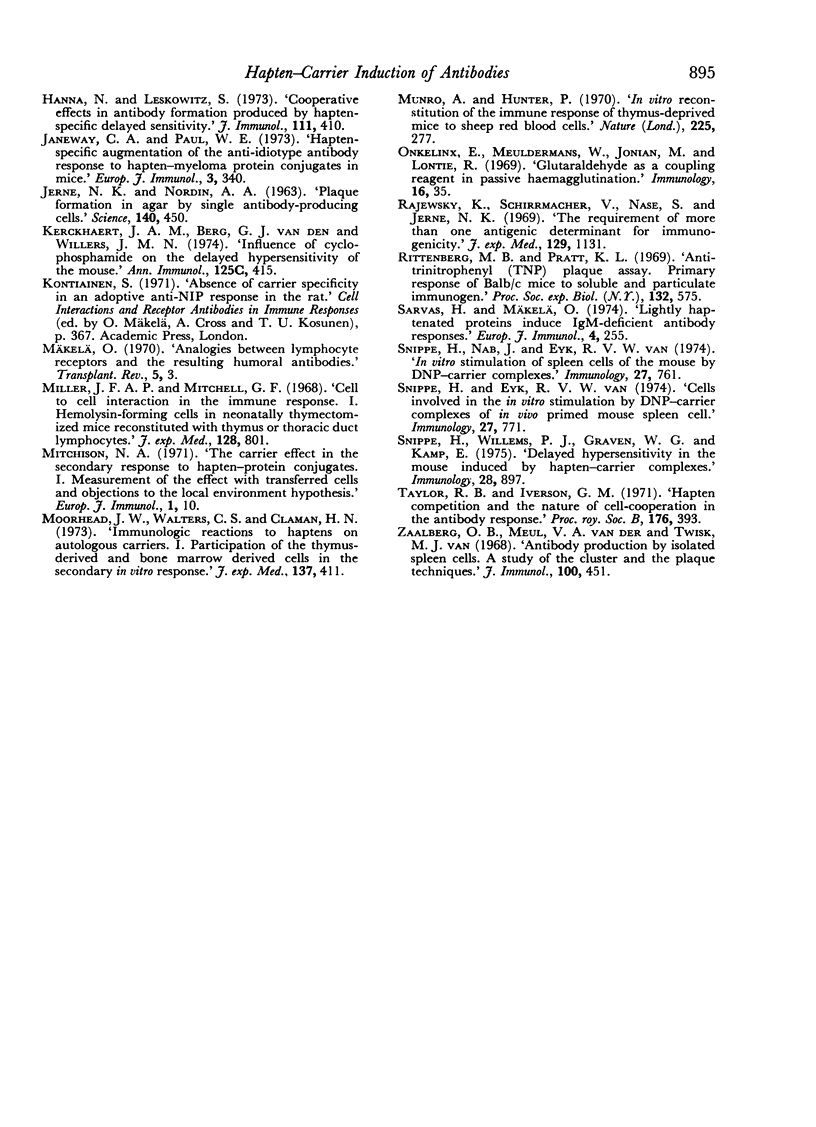
Selected References
These references are in PubMed. This may not be the complete list of references from this article.
- Aird J. Thymus dependence of the immune response: response to the haptenic determinant NIP in mice. Immunology. 1971 Apr;20(4):617–624. [PMC free article] [PubMed] [Google Scholar]
- Dresser D. W., Wortis D. H. Use of an antiglobulin serum to detect cells producing antibody with low haemolytic efficiency. Nature. 1965 Nov 27;208(5013):859–861. doi: 10.1038/208859a0. [DOI] [PubMed] [Google Scholar]
- EISEN H. N., CARSTEN M. E., BELMAN S. Studies of hypersensitivity to low molecular weight substances. III. The 2,4-dinitrophenyl group as a determinant in the preciptin reaction. J Immunol. 1954 Nov;73(5):296–308. [PubMed] [Google Scholar]
- Hanna N., Leskowitz S. Cooperative effects in antibody formation produced by hapten-specific delayed sensitivity. J Immunol. 1973 Aug;111(2):410–415. [PubMed] [Google Scholar]
- Janeway C. A., Jr, Paul W. E. Hapten-specific augmentation of the anti-idiotype antibody response to hapten-myeloma protein conjugates in mice. Eur J Immunol. 1973 Jun;3(6):340–347. doi: 10.1002/eji.1830030605. [DOI] [PubMed] [Google Scholar]
- Kerckhaert J. A., Van den Berg G. J., Willers J. M. Influence of cyclophosphamide on the delayed hypersensitivity of the mouse. Ann Immunol (Paris) 1974 Mar-Apr;125(3):415–426. [PubMed] [Google Scholar]
- Miller J. F., Mitchell G. F. Cell to cell interaction in the immune response. I. Hemolysin-forming cells in neonatally thymectomized mice reconstituted with thymus or thoracic duct lymphocytes. J Exp Med. 1968 Oct 1;128(4):801–820. doi: 10.1084/jem.128.4.801. [DOI] [PMC free article] [PubMed] [Google Scholar]
- Mitchison N. A. The carrier effect in the secondary response to hapten-protein conjugates. I. Measurement of the effect with transferred cells and objections to the local environment hypothesis. Eur J Immunol. 1971 Jan;1(1):10–17. doi: 10.1002/eji.1830010103. [DOI] [PubMed] [Google Scholar]
- Moorhead J. W., Walters C. S., Claman H. N. Immunologic reactions to haptens on autologous carriers. I. Participation of both thymus-derived and bone marrow-derived cells in the secondary in vitro response. J Exp Med. 1973 Feb 1;137(2):411–423. doi: 10.1084/jem.137.2.411. [DOI] [PMC free article] [PubMed] [Google Scholar]
- Munro A., Hunter P. In vitro reconstitution of the immune response of thymus-deprived mice to sheep red blood cells. Nature. 1970 Jan 17;225(5229):277–278. doi: 10.1038/225277a0. [DOI] [PubMed] [Google Scholar]
- Mäkelä O. Analogies between lymphocyte receptors and the resulting humoral antibodies. Transplant Rev. 1970;5:3–18. [PubMed] [Google Scholar]
- Onkelinx E., Meuldermans W., Joniau M., Lontie R. Glutaraldehyde as a coupling reagent in passive haemagglutination. Immunology. 1969 Jan;16(1):35–43. [PMC free article] [PubMed] [Google Scholar]
- Rajewsky K., Schirrmacher V., Nase S., Jerne N. K. The requirement of more than one antigenic determinant for immunogenicity. J Exp Med. 1969 Jun 1;129(6):1131–1143. doi: 10.1084/jem.129.6.1131. [DOI] [PMC free article] [PubMed] [Google Scholar]
- Rittenberg M. B., Pratt K. L. Antitrinitrophenyl (TNP) plaque assay. Primary response of Balb/c mice to soluble and particulate immunogen. Proc Soc Exp Biol Med. 1969 Nov;132(2):575–581. doi: 10.3181/00379727-132-34264. [DOI] [PubMed] [Google Scholar]
- Sarvas H., Mäkelä O. Lightly haptenated proteins induce IgM-deficient antibody responses. Eur J Immunol. 1974 Apr;4(4):255–261. doi: 10.1002/eji.1830040406. [DOI] [PubMed] [Google Scholar]
- Snippe H., Nab J., van Eyk R. V. In vitro stimulation of spleen cells of the mouse by DNP--carrier complexes. Immunology. 1974 Nov;27(5):761–770. [PMC free article] [PubMed] [Google Scholar]
- Snippe H., Willems P. J., Graven W. G., Kamp E. Delayed hypersensitivity in the mouse induced by hapten-carrier complexes. Immunology. 1975 May;28(5):897–907. [PMC free article] [PubMed] [Google Scholar]
- Snippe H., van Eyk R. V. Cells involved in the in vitro stimulation by DNP-carrier complexes of in vivo primed mouse spleen cells. Immunology. 1974 Nov;27(5):771–779. [PMC free article] [PubMed] [Google Scholar]
- Taylor R. B., Iverson G. M. Hapten competition and the nature of cell-cooperation in the antibody response. Proc R Soc Lond B Biol Sci. 1971 Jan 12;176(1045):393–418. doi: 10.1098/rspb.1971.0003. [DOI] [PubMed] [Google Scholar]
- Zaalberg O. B., van der Meul V. A., van Twisk M. J. Antibody production by isolated spleen cells: a study of the cluster and the plaque techniques. J Immunol. 1968 Feb;100(2):451–458. [PubMed] [Google Scholar]


